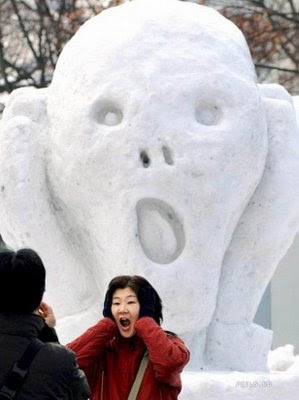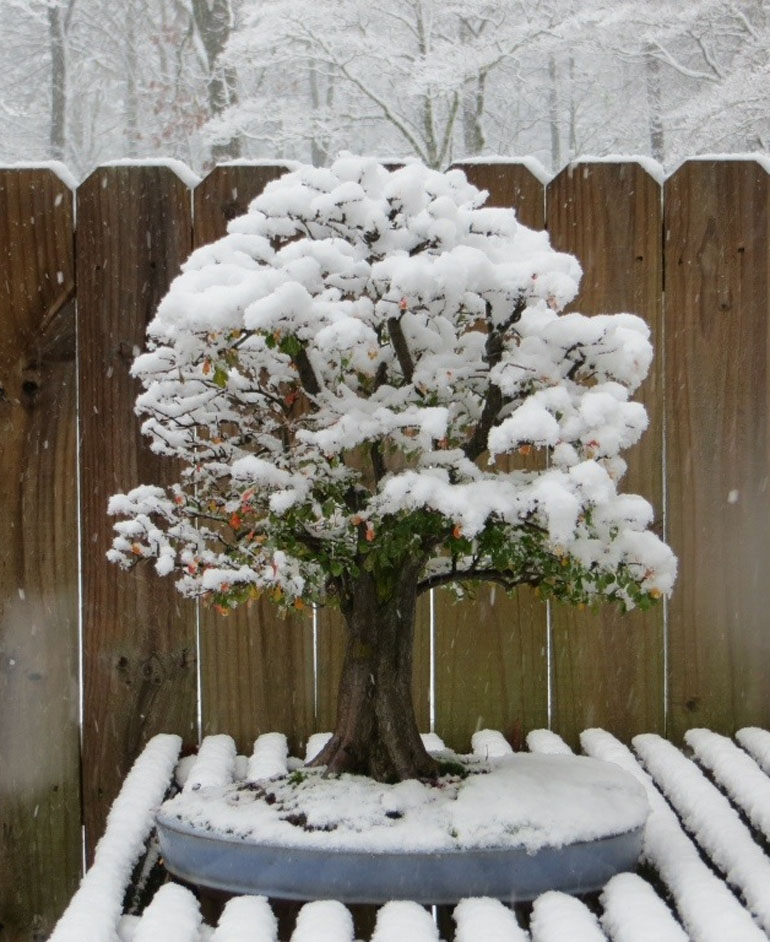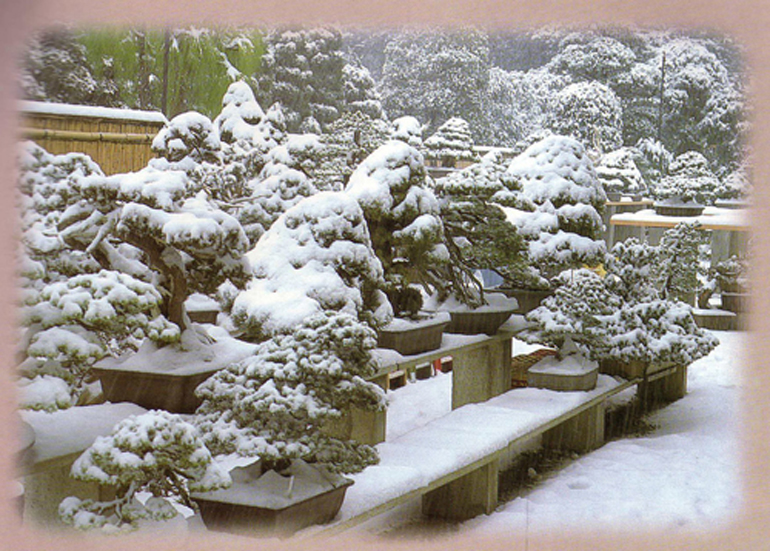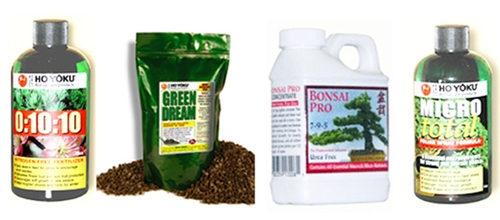
This is the second time we've shown this photo. I can't find where I first found it (and the one just below). It's sad coming from someone who preaches attribution and identification.
Yesterday’s snowy post prompted the following question from Henry L. Miller… “Given today’s post, please update us concerning leaving bonsai outside in 15-30 degree weather.” Seems like a simple enough question, but you’d be surprised how much is involved. So much in fact, that this is a good time to call in Michael Hagedorn, a consummate bonsai pro and heavy lifter.
In Michael’s own words…
Seasonal Care for Cold Weather…
“Firstly, we need to bear in mind that the top of a tree or shrub is much more cold hardy than the roots. When we read about the ‘cold hardiness’ of a plant in a garden book, that designation is assuming the darn thing is in the ground, where a plant’s roots are supposed to be. The designation takes no heed of silly bonsaiists who will put it up on a bench.”
Continued below…
SPECIAL BONSAI AESTHETICS WIRE
KILO ROLLS ONLY 15.95
500 GRAM ROLLS ONLY 8.95
100 GRAM ROLLS ONLY 3.45
–
Roots are much more tender than their tops-

A lot of people don’t know this, apparently even a few snow sculptures…
Micheal continued from above…
“Nextly… on the ground is a good first place to put a bonsai in cold weather, generally when it is dropping to about 27 F / -2.8 C overnight. On the ground a pot might be as much as 7 F warmer than on a bench, three feet higher (according to our experiments here at Crataegus Bonsai). Which is a significantly warmer temperature, if you’re a root, and you’re used to being in the ground.
“Once the thermometer drops lower, below 27 F / -2.8 C, many temperate trees and shrubs need more protection. You might need a greenhouse, poly tunnel, or coldframe, either for the whole winter or for the short severe cold snap that might last a few days. Many trees are OK outside on the ground down lower than this, such as some mountain pines and junipers, but beware the wind/cold combo…
“Wind can be as damaging as cold, and both together are a real whiz-bang yikes thingy that can deposit a dead tree at the doorstep of spring. A frozen rootball with wind is seriously not good. The bonsai can desiccate, causing if not death often some branch dieback in the growing season. Keep your trees hydrated, and keep them frequently thawed out (even if they freeze occasionally, they shouldn’t remain that way).
“You can work on many bonsai in the winter, including wiring and bending. If you’ve recently wired a tree, or done severe bending, however, they cannot be put out in wind and cold. Protect them.
“Beware also of keeping temperate bonsai at too high a temperature overwinter, which may cause weakening the following year. Keeping bonsai over 50 F / 10 C creates some problems with chilling requirements and the ability to grow out in the spring nice and strong.
“Next up on this miniseries…’Winter dormancy and chilling requirements’, which will get a bit nerdy…”
Continued below…
More from Michael…
“Please note: All temperature notations are approximations, and everything related to cold hardiness also depends on the species of tree, how late in the year it was growing, its health…all those things and others play into this discussion)”

Here's the other unattributed photo. I think it's from the same place as the one above.

This photo is from the editorial page of Bonsai Today issue 56.
Feed your Bonsai!
AND SAVE WITH OUR DISCOUNTED PRICES

Organic slow release fertilizers are the best
(Green Dream pellets & Rape Seed cakes)
You can also supplement with liquid
FREE Shipping on Continental U.S. orders 75.00 or more
but only if you choose free shipping when you check out
